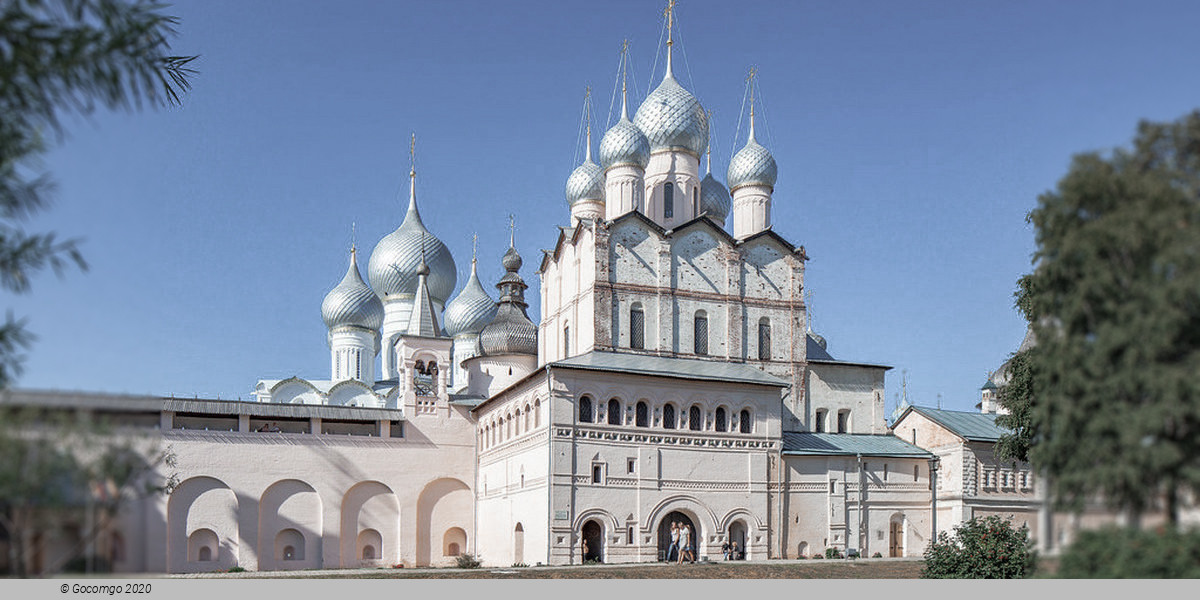Golden Ring

The Golden Ring of Russia unites old Russian cities of five Oblasts – usually excluding Moscow – as a well-known theme route. The grouping is centered northeast of the capital. These were the north-eastern part of the ancient Rus'. The ring formerly comprised the region known as Zalesye. The idea of the route and the term was created in 1967 by Soviet historian and essayist Yuri Bychkov, who published in Sovetskaya Kultura in November–December 1967 a series of essays on the cities under the heading: "Golden Ring".
For years, tourists and locals debated about which cities were “officially” part of the Golden Ring. There is no official list of which cities make up part of the Golden Ring with the exception of the eight principal cities of Yaroslavl, Kostroma, Ivanovo, Suzdal, Vladimir, Sergiev Posad, Pereslavl-Zalessky, and Rostov Veliky. In addition to this other old cities in the Ivanovo, Vladimir, and Yaroslavl regions also considered themselves as part of the ring, including Palekh, Plyos, and Shuya (Ivanovo Region) Gorokhovets, Gus-Khrustalny, Murom, Yuriev-Polsky (Vladimir Region), and Rybinsk, Tutaev, and Uglich (Yaroslavl Region). Many cities are to be found along the M8 highway or can be reached from the Yaroslavsky railway station in Moscow. Some of the churches, kremlins, and monasteries are declared as World Heritage by UNESCO. In Russia, the area of the Golden Ring is one of the regions that has strongly preserved many traditions and cultures of ancient Russia to this day.
- Sergiyev Posad is the only city in the Moscow Region to be included in the Golden Ring. It is closely linked with the UNESCO-protected Troitse-Sergieva Lavra which was founded in the 14th century by St Sergius of Radonezh. The Lavra is now one of the most important religious sites in Russian and St Sergius is one of the most revered native Russian saints.
- Pereslavl-Zalesskiy is the birthplace of Aleksandr Nevsky – a celebrated Russian hero, prince, and saint. It also has links with Peter the Great who used to have a toy flotilla here on Lake Plescheevo. In addition, the city also boasts a beautiful 12th-century cathedral, earthen mounds, and six monasteries, four of which are active.
- Rostov Velikiy is known as Rostov-Veliky (Rostov the Great) to distinguish it from the larger Rostov-on-Don. It is among the oldest of cities in Russia, having first been mentioned in chronicles in 862. Its most impressive sight is the white-stone Kremlin which stands on Lake Nero and is now a museum-reserve. The city also has three monasteries and museums dedicated to the art of painting on enamel for which the city is famed.
- Yaroslavl is considered the unofficial capital of the Golden Ring and is also a UNESCO World Heritage Site. It is believed to have been founded in 1010 by Prince Yaroslav the Wise, after whom it is named. The city’s main sight is the Spaso-Preobrazhensky Monastery which is now a museum and among its many beautiful churches, the most famous is St Elijah the Prophet’s Church and the John the Baptist’s Church, both of which are beautifully decorated with frescos. Yaroslavl is just a 3-hour express train ride from Moscow.
- Kostroma Like Moscow, Kostroma is believed to have been founded by Grand Prince Yury Dolgoruky in the 12th century. The city is most famous for its Ipatievsky Monastery which has links with the Romanov Dynasty as the first Romanov tsar – Tsar Michael – was here being anointing to reign. Kostroma is the Golden Ring city furthest from Moscow and can be reached by a night train from the capital.
- Ivanovo is both the youngest and most industrialized of all Golden Ring cities. Previously the city was known as Ivanovo-Voznesensk after the two villages that were merged to form the new city in 1871. It is forever connected with its once-booming textile trade which led to the city being known as Bride City and Russian Manchester. Ivanovo is notable for its constructivist buildings, industrial architecture, and monuments dedicated to the city's rich revolutionary history.
- Gus-Khrustalny
- Suzdal is often referred to as an open-air museum for the number of old buildings that have been preserved and the lack of industrialization. Several sights are protected by UNESCO as the White Stone Monuments of Vladimir and Suzdal. Highlights include the Spaso-Yefimiev Monastery, which is now a museum, and the museums of the Kremlin. In addition, there are another four monasteries in the city.
- Vladimir, the former capital of medieval Russia, is historically important. It is somewhat more industrial than its neighbor, Suzdal, but St Demetrius’ Cathedral and the Dormition Cathedral, Vladimir's Golden Gates, are UNESCO protected and masterpieces of ancient Russian architecture.
- Rybinsk
- Uglich
- Myshkin
- Alexandrov

